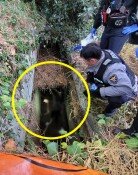Ultra-fine saliva droplets in coughs can travel over 60 meters
Ultra-fine saliva droplets in coughs can travel over 60 meters
Posted June. 16, 2015 08:04,
Koreas public health authority has been emphasizing that the droplets from a patient of Middle East Respiratory Syndrome (MERS) virus do not travel a distance that exceeds 2 meters. However, attentions are paid to a possibility raised by a research team that droplets and aerosol produced from coughs and sneezes can fly over 60 meters.
Massachusetts Institute of Technology (MIT) research team led by Professor Lydia Bourouiba has observed movement of droplets and aerosol emitted in coughs and sneezes via a high-speed camera. Through the mathematical model analysis, the research team concluded that invisible aerosol can float and travel over 60 meters. The research result was published in the Journal of Fluid Mechanics, a biweekly scientific journal of the U.K. Cambridge University Press, in April last year.
When the research result was first made public, the MIT teams unexpected research result made headlines of the overseas media. Because the research raised a possibility that Ebola virus could spread through fine droplets in a cough or a sneeze without direct contacts with a patient, amid the number of patients contracted the deadly virus was rapidly increasing in the West Africa. Regarding the possibility raised by the MIT team, the U.S. Centers for Disease Control and Prevention assured that droplets cannot fly over 1.8 meters (6 feet).
However, the research result revealed the fact different from the CDCs conclusion. High-speed imaging of droplets and aerosol from coughs and sneezes confirmed that some big droplets that could be seen by naked eyes immediately fell down to the ground while invisible ultra-fine aerosol formed gas clouds floating in the air. It is the same as clouds floating in the sky, which consists of fine water drops (vapors) like aerosol.
Aerosol is extremely small with a diameter of 1μm (1μm is the length equaling one millionth of a meter). But the size of an Ebola or MERS virus particle is one tenth of the diameter of aerosol, which means several tens of virus particles can be included in the aerosol. It is not all about visible saliva emitted from coughs. The aerosol can move like gas that is not seen by eyes, can get out of a shut door and get into a ventilation system, said the researchers. Professor Jeong Yong-seok at the Department of Biology in Kyunghee University said, Mostly, a disease is spread via direct contacts or droplets in an open space. But in a sealed or closed space where air circulation is slow, there is a possibility of contagion through aerosol or droplet nuclei (the dried residue formed by evaporation of droplets), which must not be taken lightly.
idol@donga.com



![[단독]점유율 뚝-계약 줄취소…배터리도 구조조정 시사](https://dimg.donga.com/c/138/175/90/1/wps/NEWS/IMAGE/2026/01/15/133159957.1.jpg)


![[단독]“물건 보냈는데 돈 안와”… 국제정세 불안에 수출대금 8000억 떼일 위기](https://dimg.donga.com/c/138/175/90/1/wps/NEWS/IMAGE/2026/01/15/133160131.1.jpg)
